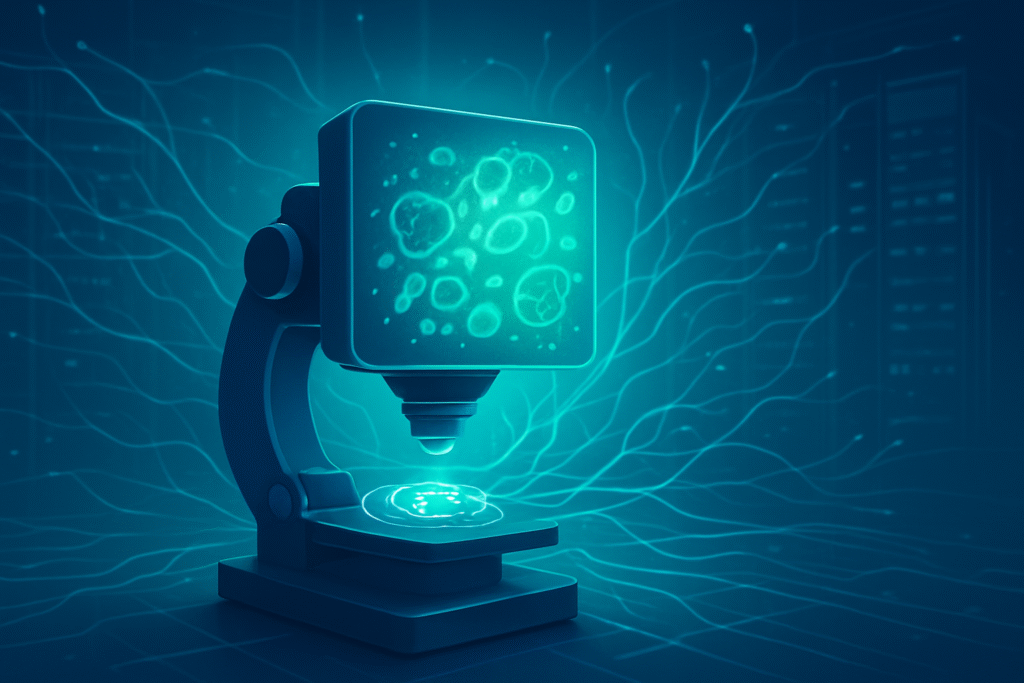
Salt Lake City, UT – October 23, 2025 – In a significant leap forward for clinical diagnostics and global public health, ARUP Laboratories, a national clinical and anatomic pathology reference laboratory, has developed and fully implemented an advanced Artificial Intelligence (AI) tool that detects intestinal parasites in stool samples with unprecedented accuracy and speed. This pioneering system, developed in collaboration with Techcyte, marks a pivotal moment in the fight against parasitic infections, promising earlier detection, more effective treatment, and improved disease prevention strategies worldwide.
The AI-powered solution, which completed its full rollout for comprehensive ova and parasite (O&P) testing in March 2025, represents a paradigm shift from laborious traditional microscopic examination. By leveraging deep learning, ARUP has not only augmented the capabilities of its highly skilled medical technologists but also established a new benchmark for efficiency and reliability in a critical area of infectious disease diagnostics.
A Deep Dive into the AI's Diagnostic Prowess
At the heart of ARUP's groundbreaking system is a sophisticated deep-learning model, specifically a convolutional neural network (CNN), trained to identify even the most subtle indicators of parasitic presence. The diagnostic process begins with the digital scanning of prepared stool samples, including both trichrome-stained and wet-mount slides, into a high-quality digital database. This digital transformation is crucial, as it allows the AI algorithm to meticulously screen these images for ova and parasites.
The AI primarily functions as an intelligent screening tool, capable of rapidly and accurately filtering out negative specimens. For any samples flagged by the AI as potentially positive, highly trained medical technologists conduct a thorough manual evaluation to confirm the organism's presence and identity. This augmented workflow ensures that human expertise remains central to the diagnostic process, while the AI handles the bulk of the initial screening, significantly reducing the manual workload. ARUP first integrated AI for the trichrome portion of the O&P test in 2019 and, by March 2025, became the first laboratory globally to extend this AI capability to include wet-mount analysis, covering the entire O&P testing process.
This innovative approach starkly contrasts with traditional microscopy, which relies heavily on the individual skill, experience, and endurance of laboratory personnel to manually scan slides. The AI tool demonstrates superior accuracy, boasting a positive agreement of 98.6% between AI and manual review in validation studies. Remarkably, the system identified an additional 169 organisms that were initially missed by human technologists, even in highly diluted samples, indicating an improved limit of detection. Since its initial launch, the positivity rate for parasite detection has nearly doubled, underscoring the AI's enhanced sensitivity. Furthermore, the AI's ability to perfectly scan every inch of a slide ensures unparalleled consistency, minimizing human error and detecting rare eggs that might otherwise be overlooked. This efficiency allows laboratorians to focus their expertise on complex cases, alleviating physical demands and eye fatigue associated with prolonged microscopic examination.
Reshaping the Competitive Landscape in Clinical Diagnostics
The introduction of ARUP Laboratories' AI-powered parasite detection system is poised to send ripples through the clinical diagnostics industry. As a leader in reference laboratory testing, ARUP Laboratories' (ARUP) pioneering adoption of this technology establishes it as a frontrunner in AI-driven diagnostics, setting a new standard that other laboratories will likely strive to emulate. Techcyte, the co-developer of this technology, stands to benefit immensely, solidifying its position as a key innovator in medical image analysis and AI solutions for clinical pathology.
This development presents significant competitive implications for major diagnostic labs and health technology companies. Those that fail to invest in similar AI solutions risk falling behind in terms of accuracy, turnaround time, and overall efficiency. Traditional diagnostic methods, while still foundational, face potential disruption as AI-augmented workflows become the norm. Companies specializing in laboratory automation and digital pathology solutions are likely to see increased demand for their products and services as labs seek to integrate AI into their operations. Startups focused on AI in healthcare, particularly those specializing in computer vision and deep learning for microscopy, could find new opportunities for collaboration and innovation. The market positioning of labs that adopt such technologies will be significantly strengthened, offering strategic advantages in patient care, cost-effectiveness, and operational scalability.
Broader Implications for AI and Public Health
ARUP's AI tool represents more than just an incremental improvement; it's a testament to the transformative power of AI within the broader healthcare landscape. This advancement fits perfectly within the growing trend of applying sophisticated computer vision and deep learning techniques to medical imaging, from radiology to pathology. Its impacts are far-reaching: it improves patient care by enabling faster and more accurate diagnoses, which translates to earlier and more effective treatment. Crucially, it addresses the looming crisis of declining parasitology expertise, a highly specialized field requiring extensive training and labor. By augmenting existing staff capabilities, the AI tool helps preserve and enhance diagnostic capacity.
From a public health perspective, the implications are profound. More sensitive and rapid detection methods are vital for global health, particularly in managing and preventing the spread of parasitic infections, especially in resource-limited regions. This innovation provides a robust foundation for enhanced disease surveillance and outbreak response. Experts are already comparing the potential impact of computer vision technology in clinical microbiology to that of PCR in the year 2000—a technology that fundamentally reshaped molecular diagnostics. While the benefits are clear, potential concerns include the initial investment required for digital pathology infrastructure, the need for robust validation protocols across diverse geographical regions, and ensuring that AI integration does not inadvertently lead to a deskilling of human expertise but rather a re-skilling towards oversight and complex case analysis.
The Horizon of AI-Driven Diagnostics
The successful implementation of this AI tool by ARUP Laboratories and Techcyte is merely the beginning. Near-term developments will likely see further refinement of the existing algorithms, expanding their capabilities to detect an even broader spectrum of pathogens and morphological variations. ARUP and Techcyte are already co-developing additional AI projects, signaling a clear path towards integrating high-quality AI algorithms across various laboratory needs.
Looking further ahead, the potential applications and use cases are vast. AI-powered microscopy could extend to other areas of clinical microbiology, such as bacteriology and mycology, automating the identification of bacteria, fungi, and other microorganisms. This could lead to faster diagnosis of sepsis, tuberculosis, and other critical infections. Challenges that need to be addressed include the standardization of digital slide formats, regulatory approvals for AI as a diagnostic aid, and the continuous training and validation of AI models to adapt to evolving pathogen strains and diagnostic complexities. Experts predict a future where AI becomes an indispensable component of every diagnostic laboratory, not replacing human experts but empowering them with tools that enable unprecedented levels of accuracy, efficiency, and ultimately, better patient outcomes.
A New Era for Clinical Pathology
ARUP Laboratories' pioneering AI tool for intestinal parasite detection represents a monumental achievement in the field of clinical pathology and artificial intelligence. The key takeaways are clear: significantly enhanced accuracy, dramatically improved speed and efficiency in diagnostic workflows, and a powerful new ally in the battle against parasitic diseases. This development's significance in AI history cannot be overstated, positioning AI as a critical and reliable component in routine medical diagnostics.
The long-term impact will be a transformation of laboratory operations, making them more resilient, scalable, and capable of addressing global health challenges. It also underscores the growing importance of interdisciplinary collaboration between medical experts and AI developers. In the coming weeks and months, the industry will be watching closely for further validation studies, broader adoption by other leading laboratories, and the inevitable expansion of AI into other areas of clinical diagnostics. This is not just an upgrade to a diagnostic test; it is a clear signal of a new era where AI plays a central role in safeguarding public health.
This content is intended for informational purposes only and represents analysis of current AI developments.
TokenRing AI delivers enterprise-grade solutions for multi-agent AI workflow orchestration, AI-powered development tools, and seamless remote collaboration platforms.
For more information, visit https://www.tokenring.ai/.





